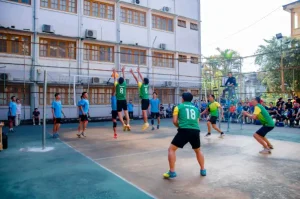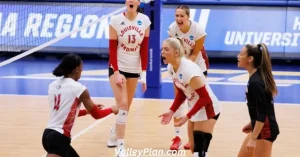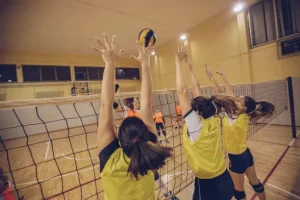A kill in volleyball is a way to score when a player spikes or strikes the ball so well that it either hits the floor on the other team’s side of the court or can’t be returned by the other team. This gives the attacking team a point.
Kills show the fastness and accuracy of the player. They are a critical aspect of any attacking strategy and may frequently spell the difference between winning a set or a rally.
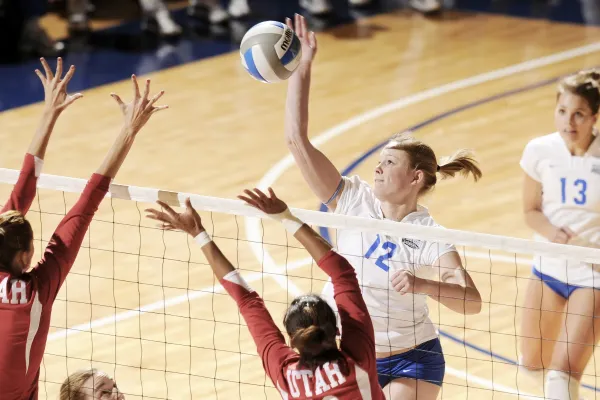
Thrill of Kills in Volleyball
People who watch volleyball are always on the edge of their seats, and when a player hits a kill, it’s one of the most exciting times. The fans cheer, teammates are happy, and the other team runs to defend against a well-planned, strong attack.
In volleyball, a “kill” is the most significant potential scoring play, and it significantly increases the tension of the game and the level of competition.
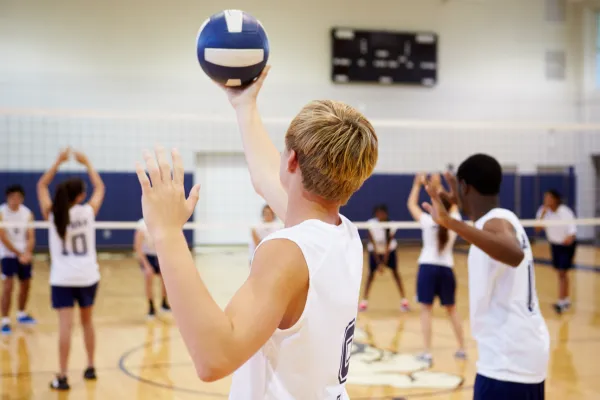
Key Elements of a Kill
To understand kills better, let’s break down the key elements that constitute a successful kill:
| Key Elements | Description |
|---|---|
| Power | A successful kill requires a powerful attack. Players must generate significant force to send the ball over the net and beyond the reach of the opposing team. |
| Accuracy | While power is essential, accuracy is equally important. A well-placed attack that finds the gaps in the opponent’s defense is more likely to result in a kill. |
| Timing | Timing is crucial in volleyball. Hitters must coordinate their approach, jump, and attack with the setter’s delivery. Perfect timing ensures a clean and effective kill. |
| Placement | Effective placement involves targeting areas on the court where the opposing team is vulnerable. Whether it’s a deep corner or a short tip, strategic placement can lead to successful kills. |
| Variation | The best hitters are not one-dimensional. They can execute various attack techniques, keeping the defense guessing and preventing predictability. |

Techniques and Types of Kills
Each volleyball kill requires different skills and strategies. Standard murder methods include:
| Techniques & Types of Kills | Description |
|---|---|
| Cross-Court Kill | The first type of kill, a “cross-court kill,” involves spiking the ball diagonally over the net to hit the opponent in the corner. It’s an excellent way to exploit rival defense weaknesses. |
| Line Shot | The line Shot is performed by sending the ball directly down the wall. There must be more wiggle room for the defending squad facing this attack. |
| Cut Shot | The third shot is the “cut shot” in which the ball is hit slightly beyond the net and then aimed at the shallow sections of the opponent’s court. It’s a tricky shot that requires expert execution. |
| Tip or Dink | A tip or dink is a soft and finesse attack where the hitter gently taps the ball over the net. This is particularly useful when the opponent’s blockers expect a powerful spell. |
| Roll Shot | A roll shot involves adding a backspin to the ball, causing it to drop suddenly after crossing the net. It’s a deceptive shot that can catch the defense off guard. |
| Slide Attack | In a slide attack, the hitter approaches the ball from a wide angle and attacks it in the air. Middle blockers often use this type of kill. |
| Quick Attack | Quick attacks are executed by middle blockers, involving a fast and powerful hit from the net’s center. These attacks rely on precise timing and coordination. |

Role of the Hitter
In volleyball, the player primarily responsible for executing kills is known as the “hitter” or “attacker.” The hitter’s role is pivotal in determining the outcome of a rally. Moreover, here are the key responsibilities of a hitter:
| Key Responsibilities | Description |
|---|---|
| Reading the Setter | Hitters must closely watch the setter’s positioning and hand signals to anticipate the type and direction of the set. |
| Approach and Timing | Hitters employ a well-practiced approach, including a run-up to the net, jump, and timing their attack to meet the ball at the highest point of their jump. |
| Shot Selection | Hitters must quickly assess the opponent’s defense and choose the most suitable type of kill to exploit weaknesses. |
| Power and Accuracy | A successful hitter combines power with accuracy to send the ball past blockers and into the opponent’s court. |
| Blocking | Hitters should also excel in blocking, which is a crucial defensive aspect of the game when not attacking. |
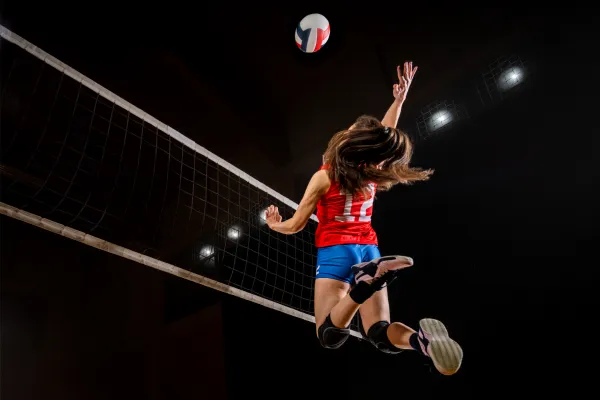
Setting Up for a Kill
A successful kill is a result of seamless teamwork. It begins with the setter, who plays a critical role in setting up the hitter for an attack. Here’s how the process unfolds:
- Set: The setter receives the pass or dig and delivers a well-timed and accurately placed set to the hitter.
- Approach: The hitter, in coordination with the setter’s delivery, begins their process to the net. This typically involves a series of steps and jumps.
- Contact: The hitter makes contact with the ball at the peak of their jump and uses their skill and judgment to execute a successful kill.
- Blocker Interaction: The hitter must also contend with the opponent’s blockers, either by using power to surpass them or employing finesse to outmaneuver them.
- Defensive Reaction: The opposing team’s perimeter defense or rotational defense must react quickly to the attack, attempting to dig or receive the ball to keep the rally alive.
Achieving a kill is a dynamic and exciting process that relies on precise coordination between the setter and the hitter.
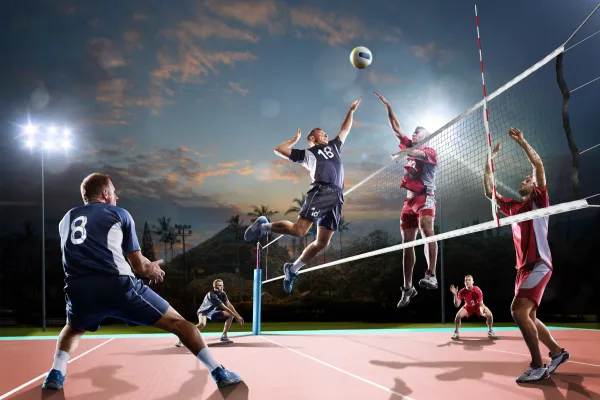
Kills in Different Volleyball Formats
Kills are a universal aspect of volleyball, but the number of players on a team and the specific rules can vary. Let’s take a brief look at how kills are relevant in different formats of volleyball:
Indoor Volleyball:
Six players on each side of the net make up a team in classic indoor volleyball. Kills are a crucial part of getting points and keeping the attacking pressure up.
Beach Volleyball:
Beach volleyball is usually played with two players on each team. Kills are equally important on the beach, as they help teams secure points in a dynamic and challenging environment.
Sitting Volleyball:
In sitting volleyball, designed for athletes with disabilities, kills remain a fundamental part of the game. Players execute kills while seated and use their upper body strength for power and precision.
Para Volley (Standing Disabled):
In Para Volley, played by standing-disabled athletes, the principles of kills remain consistent with indoor volleyball, emphasizing power, placement, and precision.
The significance of kills transcends the format of the game, showcasing their importance in all variations of volleyball.
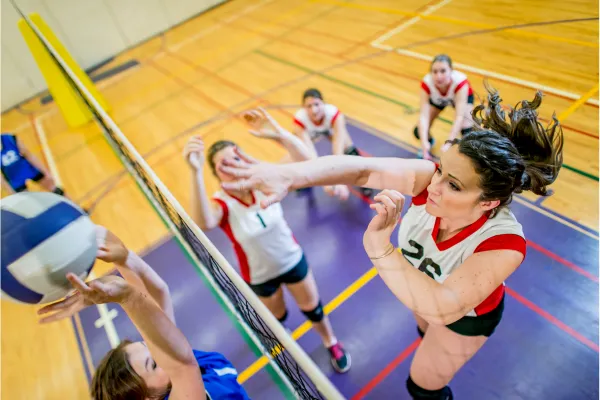
Significance of Kills in Volleyball
Kills are more than just exciting plays in volleyball; they have significant implications for the game’s outcome. Let’s explore why kills are so crucial in the sport:
| Importance | Description |
|---|---|
| Scoring Points | Kills are the primary means of scoring points in volleyball. A well-executed kill results in an immediate point for the attacking team. |
| Offensive Dominance | Teams with proficient hitters and a solid offensive strategy often dominate the game. Kills are the culmination of these strategies. |
| Momentum Shifter | A powerful kill can shift the momentum of a game. It energizes the attacking team, demoralizes the defense, and engages the crowd. |
| Psychological Advantage | Consistent kills can create a psychological advantage, as the opposing team may become anxious or demotivated when they struggle to defend against successful attacks. |
| Strategic Element | Coaches and teams strategically plan for kills, creating offensive plays and set pieces that revolve around a powerful and well-timed attack. |
| Versatility | Hitters who can execute different types of kills offer versatility to their team’s offensive strategy, making them unpredictable and challenging to defend against. |

Common Mistakes and How to Avoid Them
While kills are a crucial aspect of volleyball, Players can do simple things wrong that hurt their effectiveness. Here are some mistakes and tips on how to avoid them:
- Lack of Vision: Hitters may become too focused on power and neglect court vision. It’s essential to assess the opponent’s defense and identify gaps for strategic placement.
- Predictability: Repeatedly using the same type of kill can make a hitter predictable. Mix up your attacks to keep the defense guessing.
- Poor Timing: Timing is critical. A mistimed jump or approach can result in an ineffective attack. Practice timing with setters consistently.
- Ignoring the Block: Hitters should be aware of the opposing blockers. Failing to adjust to block placement can lead to errors.
- Overcommitting: While power is vital, overcommitting to a kill can lead to unforced errors. Maintain control and accuracy.
- Ignoring Defensive Skills: Hitters should also excel in defensive skills, as they are crucial when not attacking.
FAQs
A spike in volleyball is a hard hit that is meant to send the ball over the net and into the other team’s court. On the other hand, a kill is a spike that gets a point, either by falling on the opponent’s floor or making them make a mistake.
Indeed, a tip can lead to a kill in volleyball. A well-executed tip, when skillfully placed in the opponent’s court and not effectively defended, results in a point for the attacking team.
In volleyball, “SP” stands for “Service Point.” It refers to a point scored when the serving team successfully wins a rally.
Yes, in volleyball, a spike is often referred to as a kill when the attacking player successfully scores a point by sending the ball to the ground on the opponent’s side of the court.
Volleyball liberos wear different jerseys and can’t hit the ball over the net. The libero’s key duties include digging, passing, and serving, strengthening the defense.
Conclusion
Kills in volleyball epitomize power, precision, and strategy. Not only are they game-changers, but they also serve as momentum-shifters and crowd-pleasers.
Therefore, comprehending what kills entail, mastering the techniques involved, and recognizing their significance in the game is essential for both players and enthusiasts alike.
As you continue your volleyball journey, whether as a player or a spectator, keep an eye on the electrifying kills that define the sport.
Celebrate the skill, teamwork, and athleticism required to execute these remarkable plays, and you’ll gain a deeper appreciation for the captivating world of volleyball.
Related Posts
Can you kick the ball in volleyball
Can you use your head in volleyball
What does SP mean in volleyball
Yellow & Red Card in volleyball
Can You Wear Basketball Shoes For Volleyball?

Hassan Baig a former volleyball player, coach and Administrative At Volleyplan.com.
My name is Hassan Baig and I am a former volleyball player and coach. I have a passion for the sport and have dedicated my life to promoting it. I have worked with some of the best players in the game and have helped them achieve their full potential Read More


